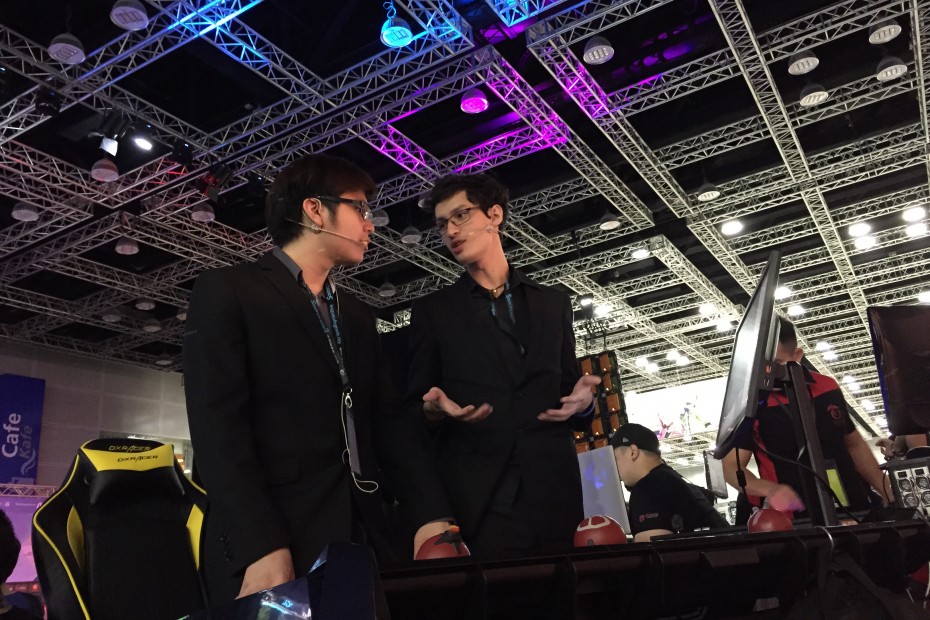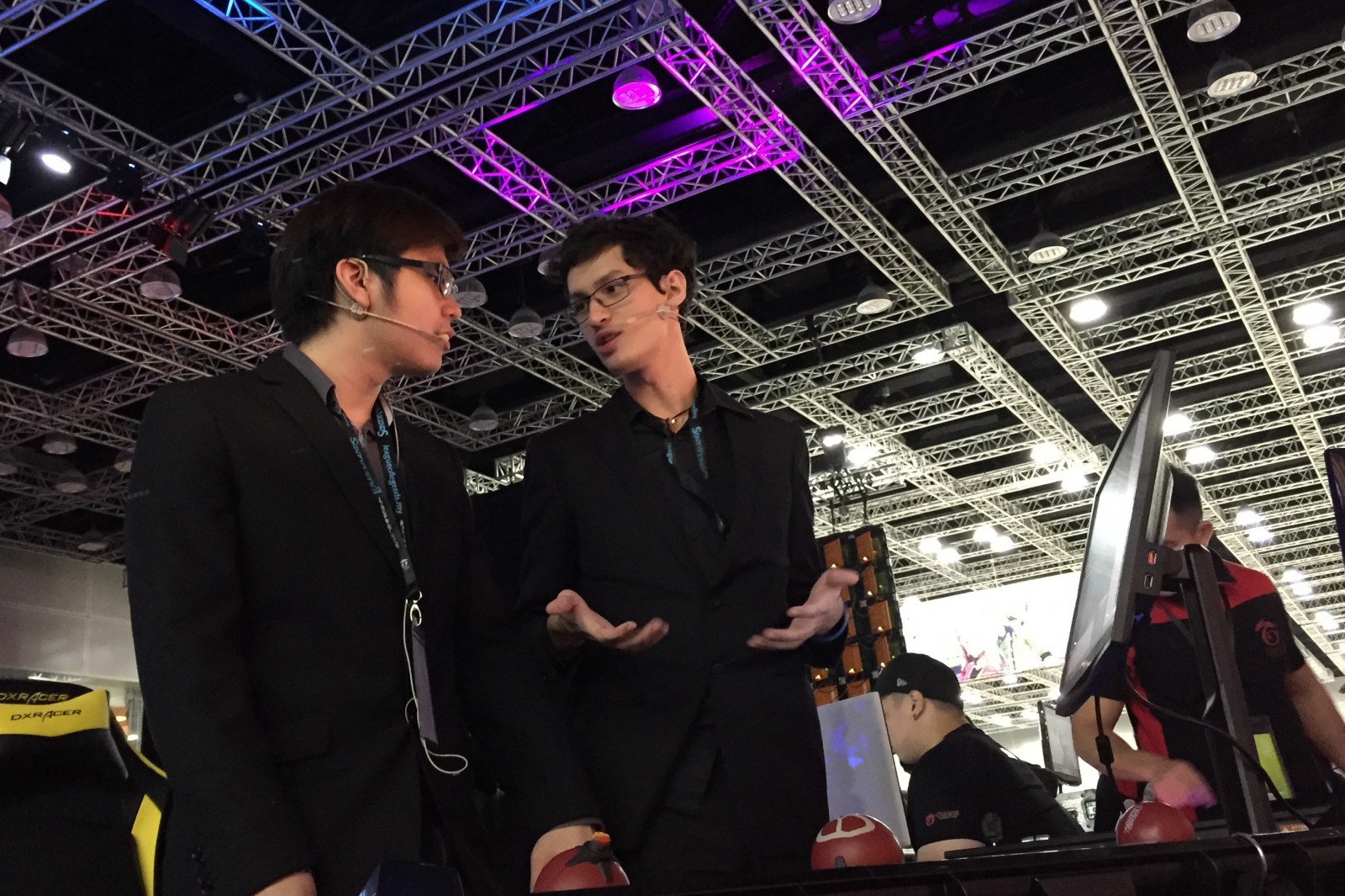Believe it or not, shoutcasters do not mindlessly, well, shout over an ongoing game when they’re on the job – there is an art to it. And it is something shoutcasters work tirelessly on improving.
Pro shoutcasters from more developed e-sports regions are mainly the ones paving the way and setting the (very high) standards for others to follow, according to local shoutcasters Sean-Li “Lii” Murmann and Aaron “Panda” Lim.
“It’s a very unique job, shoutcasting,” said Lii. “You don’t really get better overnight and you have to take your time improving slowly by watching and studying past videos of yourself and of other pro shoutcasters. It’s a weird job”
“Shoutcasters are a little crazy and tend to overhype things, pulling the cards from the back of the audience. Your job is to get everyone excited – and it’s worth it to see the results,” added Panda.
Here’s a look at pro shoutcasters on the job during an intense moment at the League of Legends World Championship Finals in Seoul, South Korea:
But many of these games can sometimes be long and drawn out with nothing exciting happening – something quite normal when teams take a more strategic approach. After all, teams tend to be extremely careful since a lot is on the line.
Yet, shoutcasters have to keep the audience entertained and informed even through all that. Lii and Panda may be speaking from their experience casting for the popular League of Legends (LoL), but the roles of shoutcasters for other games, too, are more or less the same.
Here, they fill us up on what it is to be a shoutcasters, including their different roles and tasks…
1. Play-by-play casting
Panda: This is the basics of shoutcasting. It’s basically the same as the ones you see on sports programs – they tell you what’s going on and hype it up. For LoL, these are the guys who usually jumps in during team fights and comment on the play-by-play, impromptu stuff that is happening on screen.
Lii: For anyone that wants to pick up shoutcasting, this is the basics. You pretty much just have to practice how well you convey what’s going on screen.

Local shoutcasters Aaron ‘Panda’ Lim (left) and Sean-Li ‘Lii’ Murmann on the job entertaining the large crowd of League of Legends fans at The Legends Circuit finals.
2. Colour casting
Panda: Colour casters add, well, colour to the shoutcasting by adding jokes, analysis and interesting insights into the commentary. It’s the shoutcasting done when nothing much is happening on screen at the moment.
Lii: This is where I come in. Colour casters need to know the scene very well and stay updated on everything game related, in my case LoL. It can be as simple as keeping up to date with Reddit and the teams, brushing up on all the latest news and gossip. You pretty much have to be a walking encyclopaedia for LoL.
3. Analyst
Lii: Play-by-play and colour casters are the regulars – you always have those two. Then, sometimes, you have a third caster and his job is specifically to talk about the history of the teams and to create a story – even rivalry – between them. It’s an extension from colour casting, and analysts have to make it interesting for the crowd with these info, even carrying it onto future matches. This is a more advanced form of shoutcasting.
4. In general
Lii: One of the biggest part of shoutcasting is to research and make predictions about the match at hand. That includes everything from what ‘Champions’ (characters that players choose prior to a game for its unique abilities to help them win) each team might possibly pick, to what strategies or advantages one team might have over the other.
Panda: For this, us shoutcasters need to have very good background knowledge to make accurate and informed assumptions, while adding in interesting facts as we go along with our shoutcasting. Pro shoutcasters, in fact, practice and research for up to six hours daily to achieve this. Of course, they also have proper production and teleprompters and everything.


Tell us what you think!